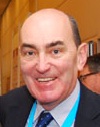With European defence budgets declining the development and application of military radar systems require creative, adaptive planning and implementation. The 11thMilitary Radar conference in London addressed the issues facing the developers and implementers of current and future military radar systems. The two-day conference on 27 and 28 November, augmented by pre-conference workshops on 26 November was sponsored by MACOM, Aselsan and Hittite.
The conference chairman Asif Anwar, Director, Defence Technology Markets, Strategy Analytics, offered a technology overview, considering the decline of vacuum tube technology, the growth of solid state RF technology and increasing operations across wider bandwidths and higher frequencies before presenting an overview of semiconductor technology.
Cutting edge developments being made by defence research agencies were highlighted. These including DRDC, TNO and DSTL, whose Dr Stephen Moore considered, Airborne AESA Radar: How to Unlock the Capability. Dr Stephan Palm of Fraunhofer-FHR discussed, Miranda-300 – Ultra High Resolution Imaging Using a Terahertz Radar, while on an academic note professor Alexander Yarovoy of Delft University of Technology gave an Introduction to the PARSAX Radar.
The conference also focused on the challenges faced by leading contractors including Thales, Cassidian, General Dynamics and MACOM, whose Paul Beasly presented, MACOM: GaN Technology and the Changing Landscape of the Defence and Aerospace Market.
From a different perspective military radar operators’ experiences, including officers from Canada, France, Germany and the Czech Republic offered first hand accounts of their experience.

